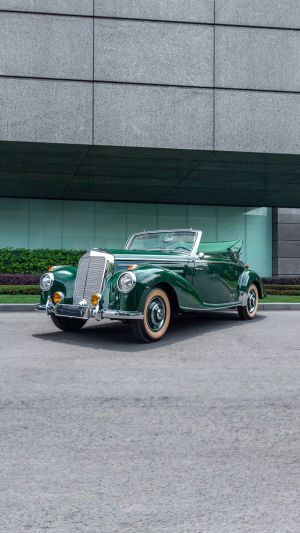Classic cars generally refer to cars produced from the first half of the 20th century to the late 1970s. These cars have unique features in terms of engine technology, performance, and design.
The following is a discussion of classic car engine technology and its related aspects of horsepower, torque, acceleration, fuel efficiency, and suspension:
1. Horsepower:
Classic cars typically have low horsepower, making them relatively deficient compared to modern cars. This was because early engine technology limited horsepower production.
Some classic cars like the Ford Model T usually only have 20 to 30 horsepower, while some higher-end classic cars may have around 60 horsepower. However, the horsepower output of classic cars is usually sufficient for the driving demands of the time.
2. Torque:
Engines in classic cars typically offer higher torque in the lower rpm range, which makes them perform well in city driving and low-speed cruising.
These engines may offer high torque at low speeds, but relatively low horsepower output at high speeds. This is different from the characteristics of modern high-revving engines, which provide more horsepower at high speeds.
3. Acceleration performance:
Classic cars often have slower acceleration, especially compared to modern performance cars. Due to their relatively low horsepower and high vehicle weight, classic cars can take a long time to accelerate from 0 to 60 mph, often taking more than 10 seconds.
However, this was considered a good performance by the standards of the time.
4. Fuel efficiency:
Classic cars are often less fuel-efficient than modern cars. These vehicles typically use larger displacement engines and lack modern fuel injection and fuel-saving technology.
As a result, they have poorer fuel economy and lower miles per gallon. This was also because the social and regulatory environment at the time was less focused on fuel efficiency.
5. Suspension system:
Suspension systems on classic cars are usually more basic, using simple suspension designs such as spring suspension or independent suspension. This kind of suspension system usually does not have the various electronic control systems and tuning capabilities of modern vehicles.
As a result, classic cars can be more bumpy and unstable when driving, especially on uneven roads.
Classic cars have significant value as collectibles, which includes multiple factors such as market price trends, rarity, and difficulty of restoration:
1. Market price trends:
- Classic car market prices are often volatile, but the overall trend is upward. This is because classic cars represent a part of automotive history and have a special appeal to car enthusiasts and collectors.
-Rare, popular classic car makes and models often command higher prices, while some lesser-known makes and models may also have high values due to their rarity.
2. Rarity:
- The value of a classic car is closely related to its rarity. Certain specific models, years, or specially configured vehicles may be rare and therefore more popular among collectors.
- Limited edition, special-order, or historic cars are generally more valuable because they are more scarce on the market.
3. Repair difficulty:
- The difficulty of restoring a classic car varies by model and decade. Some classic car parts may have been discontinued or are very difficult to find, which can increase the complexity and cost of restoration.
- Restoring a classic car may require specialized skills and experience, as the technology and manufacturing methods of these vehicles may be very different from modern vehicles. At the same time, some classic cars may need to be refurbished, rebuilt, or restored to maintain their original condition.
4. Historical and cultural value:
- Classic cars often carry important information about automotive history and culture. Certain models may be associated with historical events or famous figures, factors that can add to their cultural value.
- Some classic cars may represent design trends and technological breakthroughs of a particular era and are therefore also attractive in terms of cultural and artistic value.
5. Maintenance and maintenance:
- Collection of classic cars requires regular maintenance and upkeep to maintain their quality and value. This may include special parts procurement, regular inspections, and protective measures.
- Some classic cars can be expensive to maintain and restore, so careful consideration is needed.
Overall, classic cars have the potential to increase in value as collectibles, but they also require careful research and consideration. If you are interested in collecting classic cars, it is recommended to consult a professional automotive history and valuation expert to ensure you get the maximum return on your investment and protect this precious automotive heritage.





